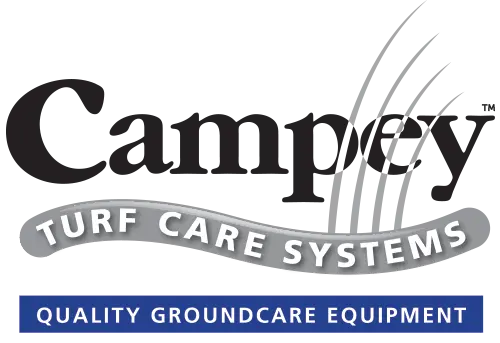Compaction on greens is a common issue on many golf courses, but for Ruddington Grange Golf Club the extent and depth of the compaction was preventing any water filtration at all on many parts of the course. A solution was essential to restore this great course to the level of play expected of it.
The course, based near Nottingham, was suffering with greens as compacted as 1000psi, but a visit from Campey product specialist, Simon Holland, introduced the IMANTS ShockWave to the aeration programme and the results were not just dramatic, but instant!
Previously, wet fairways had closed some parts of the course and other areas were totally inaccessible, but the addition of this machine has seen a massive reduction in compaction and an increase in general turf health, making it exactly what head greenkeeper, James Wheatley, wanted.
“Simon came to us on one of his visits and it was the first time I’d met him,” he said. “We got talking and I took him down to one of the greens, and he brought his penetrometer along. The PSI within the green was up towards 1000psi, so he suggested the ShockWave.
“So, from there we decided to have a demo of it and straight away the PSI came down to 450psi. He did the whole green and it didn’t leave any surface disruption and we were really pleased with the job it had done.
“We then wanted to run it off the green where again we tried the penetrometer, and this time it wouldn’t even go in. With one pass of the ShockWave it went straight in with no problem what so ever.
“Despite initial scepticism I knew this was a breakthrough and I could see that here was a way to tackle our problems head on. From there we hired the machine and shockwaved all the greens and the majority of the fairways, which had been so wet the previous year we had to close holes. A year on and areas of the course that were historically inaccessible during wet weather performed so much better last winter after shockwaving.”
A warm, wet, late winter delivered the usual problems of surface diseases, but James noticed that his course seemed to cope far better than many of his neighbours. He puts this down to the long term benefits of improved water filtration from using the ShockWave. Less surface water prevents diseases getting the hold that adverse weather conditions create.
“This year I’ve used it on some particularly dry bare patches and allowed the lines to open up on purpose, and then back filled them with sand and they’ve gone from being bare to a full area of grass, it’s a very versatile machine.”
The next objective for the ShockWave is to take this one step further and use with a coulter kit to improve the primary drainage systems on the course. Using the minimal penetration lines made by the machine as sand slits, James backfilled with sharp sand to open another drainage direction to help the sand migrate further.
Aerating on such a wide variety of areas could cause issues when it comes to what’s under the surface, but a lack of incidents is something James has noticed. Instead of blades breaking on foreign objects in the ground they ride over them, saving both time in repairs and money on replacements.
However, the ShockWave wasn’t the only machine Simon suggested to enhance operations. A Dakota 410 Turf Tender on the back of a John Deere ProGator is now being used to backfill the work done by the ShockWave.
Using the two machines along with a new ProCore 648 has seen a vast reduction in time taken to complete maintenance, as well a massive drop in sand cost. James had to use kiln dried before, but because the Dakota can spread wet or dry material the £15 a tonne saving across the year translates to a minimum save of £2000 a year.
Another priceless commodity is also being returned in the shape of time. Due to the distance of the 14th green it took almost two hours to top dress the green using previous methods, whereas it now only takes half an hour.



